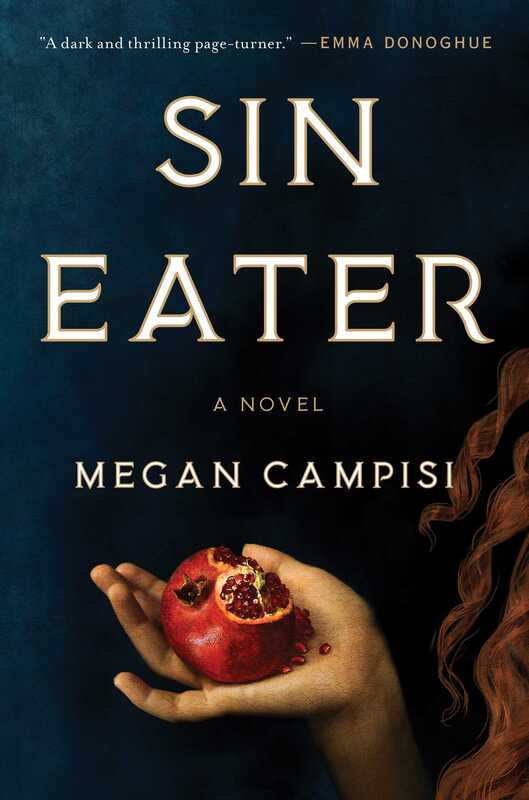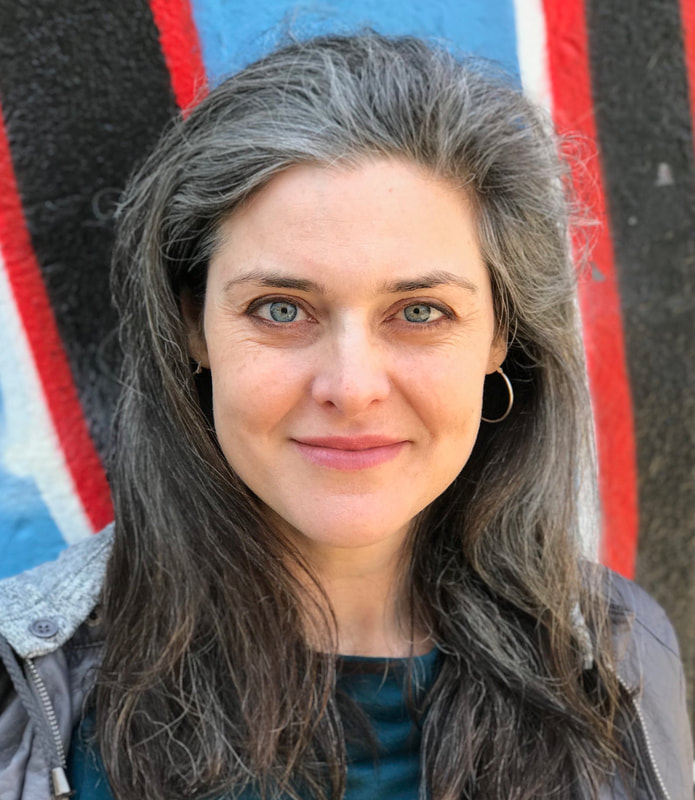WRITERS TELL ALL
 Matthew Turbeville: Hi Megan! I’m so glad I got to reach out to you about your marvelous new novel Sin Eater. Before I begin with the questions, can you tell us a little about the novel and why you felt it was so important to write this novel now? Megan Campisi: Sin Eateris a historical fiction mystery set in a reimagined Elizabethan England. It follows 14-year-old May Owens who is condemned to be a sin eater. In this role, she hears deathbed confessions and, at the funeral, eats ritual foods representing the confessed sins on the dead’s coffin, thereby taking the sins onto her own soul. As a sin eater, she becomes a pariah in her own community. But as the novel progresses, she turns this curse into an unexpected source of power. She uncovers a series of murders that reach all the way to the queen and sets out to solve them using her untouchable status. It’s a story about an isolated young woman finding her strength and also finding her people. While Sin Eater’s story is proving very timely (a young woman persevering through intense isolation), the reason I wrote the book when I did was very practical. My background is in theater, and I am mostly a playwright. When my first child was born, getting to rehearsals in addition to my day job (teaching at a theater conservatory) became so challenging, I decided to give long-form prose a try. I had been mulling over writing a coming-of-age historical mystery with a sin eater protagonist, and it seemed like the perfect project for the moment. MT: I was pulled into this book, in a way I was pulled into some books by Avi when I was younger, and some other books with historical settings by adult authors like Lyndsay Faye. One really captivating way was how you were able to use different forms of language but still captivate the reader—how do you feel you did this effectively, what was your greatest struggle with establishing this strong sense of language? MC: In creating the language of Sin Eater, I was inspired by nursery rhymes and fairy tales. For me, nursery rhymes are magical snippets of cultural history that get passed down from generation to generation like a game of telephone. And like telephone, the story becomes distorted as one generation shares it with the next. Some words remain the same, but others lose their meaning or take on new meanings. I’ve always loved this mix of mystery, invention, and history. I’ve tried to bring those qualities to Sin Eater. MT: Similarly, you also had a strong sense of character for the protagonist, May, and who she was from the very beginning. Can you describe you develop character, and how long it took to find a voice and character for Meg? Did you develop the book from character, or develop the character from the book? MC:The story and main character evolved in relation to one another. I knew I wanted May to be a “late bloomer” and possess a vulnerability that made me protective of her. At the same time, I wanted her to be resourceful and resilient. It took time to find that balance. Similarly, her journey follows the transformation in how she sees herself, the world, and her place in it. I tinkered with that journey throughout the writing and editing processes. MT: Where did the idea of a “sin eater” come from? How did the idea evolve—from sins translating to food, and women responsible for eating these sins? How did you relate all of this back to Eve? MC: I’m a history nerd, so when I encountered sin eaters, I was hooked. But for my story to work, it couldn’t remain a post-mortem ritual, as it was historically. Sin eating needed to be a deep communion between two people that was woven into the fabric of society. The ideas evolved from there. Eve seemed like the perfect representation of Lucifer in this “alt history” because she embodies the Christian concept of original sin. MT: What books and authors influenced Sin Eater most? What books, authors, and genres influenced you most during your formative years, and what book or author influenced you most in general, and is your favorite? MC: For Sin Eater, I was influenced by historical fiction writers like Peter Carey and mystery writers like C.J. Sansom. As a child, I loved Peter S. Beagle’s The Last Unicornand M.M. Kaye’s The Ordinary Princess. As for a favorite author, it’s so hard to choose. I am a huge fan of David Mitchell and George Orwell. But if I have to choose just one author, it’s Toni Morrison. MT: May has a clear understanding at one point of the book that there is a concept of light and darkness within every person. What do you think is important about this concept and why is it so important to who May is? MC: Good and evil were concepts that occupied a lot of my thoughts as a child (I was raised Catholic). It took me many years to understand how subjective these qualities are, and that my own view mattered. That, to me, is the heart of May’s journey. MT: What do you want readers to ultimately take away from Sin Eater, and why do you feel this is important in today’s world? What do you think is the most important part of Sin Eaterand how did you come across this idea, theme, or subject in your writing of the book? MC: May’s story is about deciding who you are for yourself and about finding your people. These themes are deeply rooted in my own experience growing up and choosing to lapse as a Catholic. MT: What is your writing process like? Are you a big planner? Do you outline or write as you go? How many rewrites and revisions do you go through in your rewriting process? How long did it take to make Sin Eaterthe amazing book it is today? MC: I’m a visual, physical person. When I outline, I paste sticky notes all over a large board. Then I can “see” the plot and move it around as I like. As for my process, I write whenever I can, as much as I can. When I began Sin Eater, my first child was nine months old, I was pregnant with my second child, and I had a full-time job teaching at a theater conservatory. I couldn’t be precious about when, where, and how I wrote. It took two and half years to write the book. The last six months was just editing. MT: There are strong connections to Christianity and Christians both then (the historical period when Sin Eatermight be set) and now, and there are strong connections to cult thinking, and the way we are affected by cult mentality. What’s so important about the reason young and older people need to think for themselves and not fall into a cult way of thinking, and what do you think May is in this type of thinking, and does she defy cult thinking or does she play into it over the course of the book? MC: This gets back to what I want people to take away from the story:May learns to decide who she is for herself. She also finds a community that accepts her for who she is. MT: What was your favorite part about writing this book, and what was the hardest part about writing Sin Eater? Were they the same thing? What did you learn from writing Sin Eaterand are there any parts of the writing process you’d never want to go through again? MC: I love world-building. Creating the “alt history” was a pleasure. The hardest part was the mystery: it took time to figure out how much to reveal when. I learned so much from the process, but would gladly do it all again. I truly loved writing the book. MT: Were there any parts of the book you felt you had to fight to keep in place when writing the novel? Were there any parts of the book you didn’t want to keep in the book that are now a part of the final product? MC: The editing process was remarkably smooth (in large part thanks to my fabulous editor, Trish Todd,at Atria Books.) The published book completely reflects my choices. MT: Would you ever return to the world of Sin Eater in your future books? MC: I don’t have any plans to right now. MT: Do you have a new work in progress or a book on the way to being published? I know I for one cannot wait to read whatever you publish next. Will you give us any hint to what this next book or work in general may be about? MC: I work on multiple things at once. One is another historical fiction novel about women spies in the American Civil War. It centers on women’s relationships with each other across a deep political divide and whether that divide can be bridged—something that’s been on my mind a lot lately. MT: In May’s world, and in Sin Eater, whether resulting in death or just the testing of morals and ethics, what do you feel is the greatest crime in the book, and why do you feel it’s so important to readers? MC: The greatest crime is a society taking away a person’s voice and personhood. In Sin Eater, I’ve tried to chart an individual revolution in the way one woman sees herself to remind people that change can start at home and grow from there. MT: I loved your book so much, Megan, and I’m so glad you agreed to talk about the book with us. We are so thrilled to have you talk to Writers Tell All. We wish you the most success with this book. Feel free to leave us with any lingering thoughts or ideas you feel weren’t discussed or talked about in depth, and thank you again for working with us and being involved in an interview for this website. We loved your book and encourage all of our readers to buy or preorder and read this book! MC: Thanks so much for reading and for your great questions!! Stay safe and well! Megan Campisi is a playwright, novelist, and teacher. Her plays have been performed in China, France, and the United States. She attended Yale University and the L’École International de Théâtre Jacques Lecoq. The author of Sin Eater, she lives in Brooklyn, New York, with her family.
0 Comments
Leave a Reply. |
AuthorMatthew Turbeville Archives
June 2023
Categories |

 RSS Feed
RSS Feed
